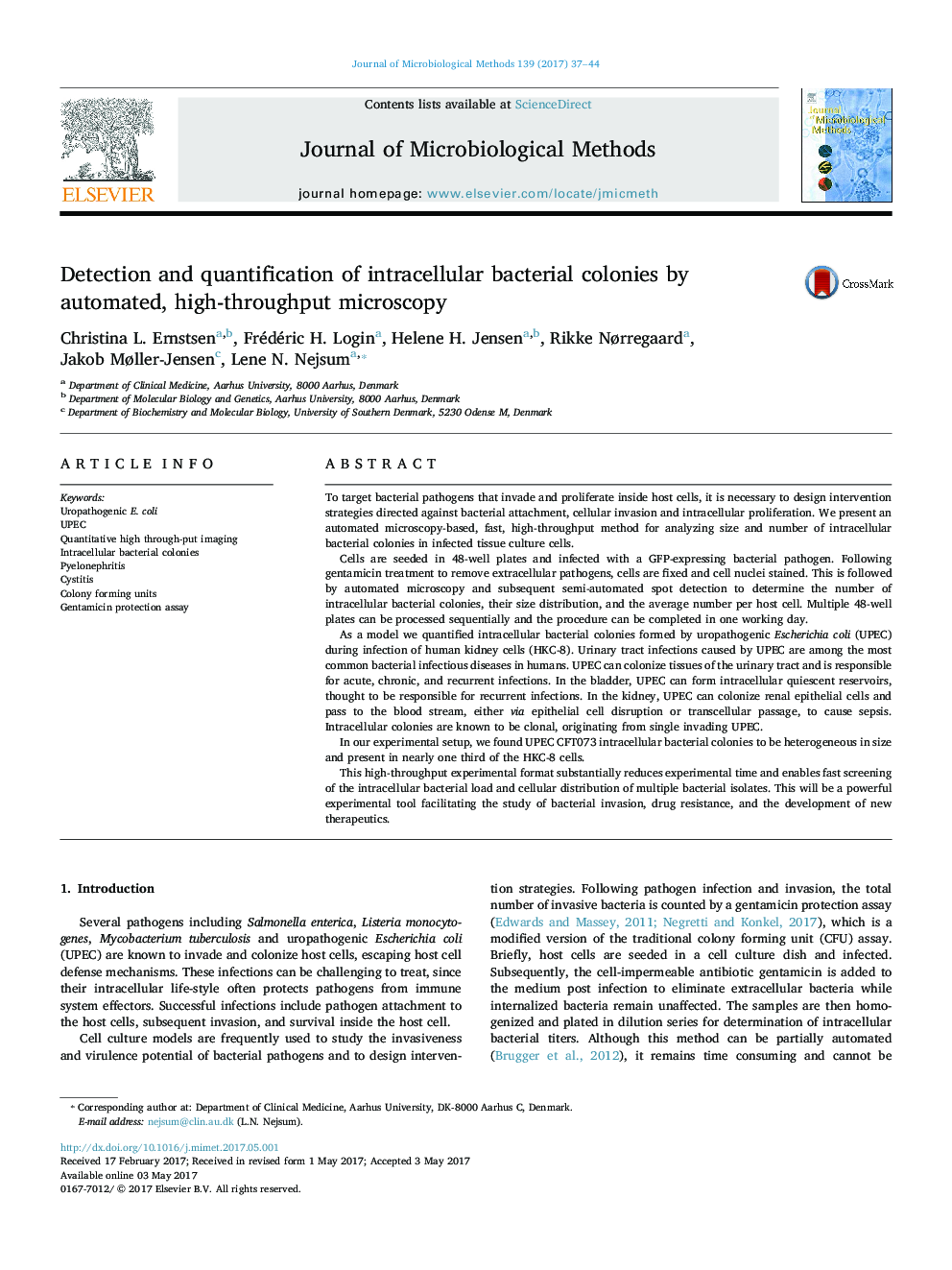| کد مقاله | کد نشریه | سال انتشار | مقاله انگلیسی | نسخه تمام متن |
|---|---|---|---|---|
| 5522273 | 1545904 | 2017 | 8 صفحه PDF | دانلود رایگان |
- Automated microscopy-based method to analyze intracellular bacterial colonies
- High-throughput: runs in 48-well format
- Faster than colony forming unit assay
To target bacterial pathogens that invade and proliferate inside host cells, it is necessary to design intervention strategies directed against bacterial attachment, cellular invasion and intracellular proliferation. We present an automated microscopy-based, fast, high-throughput method for analyzing size and number of intracellular bacterial colonies in infected tissue culture cells.Cells are seeded in 48-well plates and infected with a GFP-expressing bacterial pathogen. Following gentamicin treatment to remove extracellular pathogens, cells are fixed and cell nuclei stained. This is followed by automated microscopy and subsequent semi-automated spot detection to determine the number of intracellular bacterial colonies, their size distribution, and the average number per host cell. Multiple 48-well plates can be processed sequentially and the procedure can be completed in one working day.As a model we quantified intracellular bacterial colonies formed by uropathogenic Escherichia coli (UPEC) during infection of human kidney cells (HKC-8). Urinary tract infections caused by UPEC are among the most common bacterial infectious diseases in humans. UPEC can colonize tissues of the urinary tract and is responsible for acute, chronic, and recurrent infections. In the bladder, UPEC can form intracellular quiescent reservoirs, thought to be responsible for recurrent infections. In the kidney, UPEC can colonize renal epithelial cells and pass to the blood stream, either via epithelial cell disruption or transcellular passage, to cause sepsis. Intracellular colonies are known to be clonal, originating from single invading UPEC.In our experimental setup, we found UPEC CFT073 intracellular bacterial colonies to be heterogeneous in size and present in nearly one third of the HKC-8 cells.This high-throughput experimental format substantially reduces experimental time and enables fast screening of the intracellular bacterial load and cellular distribution of multiple bacterial isolates. This will be a powerful experimental tool facilitating the study of bacterial invasion, drug resistance, and the development of new therapeutics.
257
Journal: Journal of Microbiological Methods - Volume 139, August 2017, Pages 37-44
